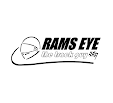The stingray is back! Chevrolet decided that the new Corvette is worthy of the moniker and I don't doubt that it is. The base model is already faster than the Grand Sport of the current generation. It is all new and improved from the ground up, sharing only two parts with the C6 Corvette. The car looks very similar to the renderings that were based on the leaked drawings and it certainly doesn't disappoint. The new rear end is starting to grow on me but I can't say I wouldn't have liked to see round taillights. According to Chevrolet, form followed function when it came to the exterior design.
Chevrolet has used its racing experience in sculpting the exterior and placement of scoops and grills that all work towards improving the aerodynamics of the car. Hot air off the radiator is directed out of the engine bay, up and over the car instead of under to help keep heat away from the differential and transmission. A lower roof helps keep centre of gravity low but without sacrificing space. The car now sports a wider stance and longer wheel base which should help improve the car's ride.
The improvements also go deeper than the new skin. Technologies from the top dog ZR1 have trickled down to the base Corvette. Lightweight carbon fibre roof and hood and an aluminum frame now is the basis for the entire Corvette line up and a rear mounted transaxle helps with weight distribution, which should be 50/50. All together, the new Corvette is 99 lb lighter than the old one while the chassis is 57% stiffer, which improves both handling and ride. Magnetic shocks have also made it down to the base models as an option. An electrically assisted steering system with variable effort has been completely reworked to provide better feedback. The steering is going to be 5 times stiffer than the system in the current generation.
Get inside the car and you'll be treated to an all new interior which is definitely a huge improvement over the last generation. The interior of the current generation has been a point of criticism among all reviews and it's great to see that GM has stepped up the game. Molded plastic will not be seen anywhere, even in the base models. Fine, soft touch materials wrap the entire interior with Napa leather available as an option in different colors and genuine aluminum and carbon fibre trim pieces are also available as options. The current generation's seats have also been criticized for not having enough bolstering and GM has addressed the issue with two seat options: a base GT seat that's designed for comfort over long distances while still providing enough support for occasional track use and a competition seat with plenty of support that's aimed at track use and includes cutouts for a 5 point harness. Both seats have magnesium frames that help save weight.
Not much new has been revealed about the beating heart of the C7 Corvette - the new Chevy small block V8. As expected, it is estimated to produce around 450 hp and 450 lb-ft torque and return a better fuel economy rating than the current 26 mpg rating. GM is estimating a 0-60 mph time of under 4 seconds, which isn't surprising since the current Corvette is in the low 4 second range and this one has more power and torque and is also lighter.
Connecting the engine to the wheels is either a 6-speed automatic or a 7-speed manual. The manual has rev matching capabilities on both upshifts and downshifts. The vehicle recognizes when you move the shifter towards a gear and even if you change your mind and decide to move to a different gear, the vehicle picks up on that and knows what gear you're going to get into. The rev matching function can be completely defeated though if you want to blip the throttle yourself to rev match and set for your gear changes.
Active handling, exhaust valves, throttle maps, magnetic ride control, and transmission shift patterns are among 12 attributes that the Driver Mode Select (DMS) changes based on five modes. The five modes are Weather (for low traction conditions), Eco, Tour, Sport and Track. The different modes should assist drivers at better controlling the car in different conditions and at different experience levels. The assists can be completely defeated though if you want to take full control.
Connecting the engine to the wheels is either a 6-speed automatic or a 7-speed manual. The manual has rev matching capabilities on both upshifts and downshifts. The vehicle recognizes when you move the shifter towards a gear and even if you change your mind and decide to move to a different gear, the vehicle picks up on that and knows what gear you're going to get into. The rev matching function can be completely defeated though if you want to blip the throttle yourself to rev match and set for your gear changes.
It seems like Chevrolet looked at the few shortcomings of the current Corvette, fixed them and then improved all the bits and pieces to build an outstanding sports car. I cannot wait until the first test to learn about how it drivers and performs!
Source: Information came from the live reveal video. Pictures came from Car & Driver.





















Comments
Post a Comment